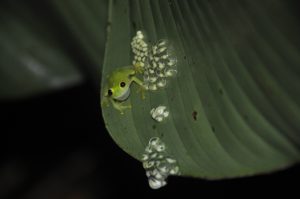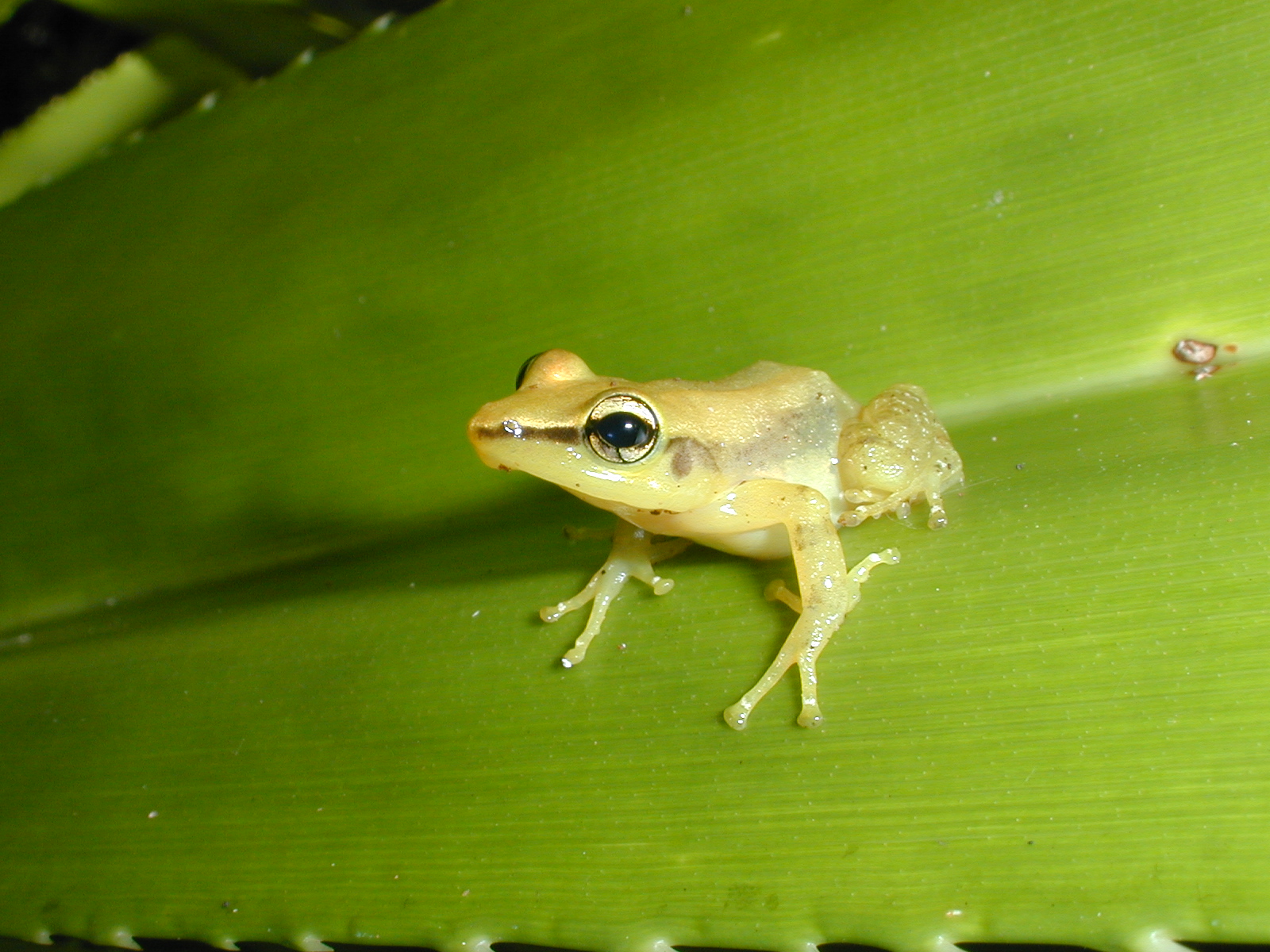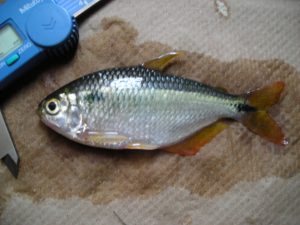Three rising Wooster seniors got their boots dirty (and wet) doing field work in Trinidad and Tobago this past summer. Zak Bradley (’14) sampled seventeen streams in Tobago and northern Trinidad catching oodles of freshwater fish. He will use DNA samples from these fish in an effort to fully document the biodiversity of freshwater fish on the island of Tobago and compare their similarity to that of the larger island of Trinidad. We had a blast catching fish both large and small in these tropical streams and even managed to catch a piranha (Astyanax bimaculatus) in the Curaguate River in Trinidad, a locality where this species had not previously been reported. Hard to see in the photo but, yes, they do have very sharp teeth!
Sara Green (’14) studied the interesting and photogenic Tobago glass frog (below). Particularly, Sara was interested in seeing what environmental stimuli might induce premature hatching in glass frog embryos. In this species (as in most glass frogs), eggs are laid on leaves over hanging streams where the embryos will eventually drop to become tadpoles and continue their development. Sara also made numerous observations on male parental care in this species. In the coming months she will be working to understand under what sets of conditions males provide care to their offspring and when they do not.

Grace Clemmens (’14) carried out a study of the Bloody Bay poison frog (a Tobago endemic, below) that involved recording the calls of males at numerous sites to examine the potential influence of anthropogenic noise pollution on their acoustic communication. This involved a lot of driving around Tobago (on the left-hand side, of course!) and listening for and recording males at as many sites as possible. In the process, we also collected data on the presence of this species from thirty-four sites that my students and I had visited previously in 2011 and 2012. Thus, we now have three years of data on the distribution of this species, which is currently classified as critically endangered by the International Union for the Conservation of Nature. No doubt, this information will be useful in the future to monitor the status of this imperiled frog.
As for myself, I kept busy working on a number of other long term projects and helping these excellent students conduct their own. And I did manage to find a little time to enjoy the beautiful sunsets, ripe mangoes, tasty roti, friendly people, and local fermented beverages.
Looking forward to the next trip!


